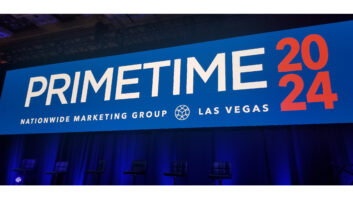The 23-year-old debate over how to best protect the rights of movie and music copyright owners, without overly restricting the right of consumers to record, raged anew at the recent 2004 Industry Forum staged by the Consumer Electronics Association (CEA).
And like similar debates of the past, this one showed primarily, that while agreeing in theory, the two sides remain widely divided when it comes to practice.
The issue was opened by CEA’s president/CEO Gary Shapiro’s introductory remarks for a panel discussion, “Intellectual Property — Policy in the Making?” Shapiro provided an overview of the issue, starting with the 1976 filing of the Betamax case, pitting Hollywood against the consumer’s right to tape movies from TV, and running up to legislation currently pending in Congress.
We are “in danger of stepping into the abyss of a pay-for-play world,” Shapiro told an overflow audience. He cited measures being pushed by content owners that would make it illegal to offer a product that might induce a consumer to infringe a copyright, to delete commercials from a TV recording or for a parent to edit out of a recording material felt to be unfit for children.
Stressing how important it is to have legislative protection for consumer rights in this age of changing technologies, Shapiro noted that the content industry was able to litigate Replay TV out of existence. Being raised, he said, are “fundamental questions that Congress will be grappling with over the next 10 years.”
The panel itself, moderated by John Healey, a reporter for the Los Angeles Times, was made up of four lawyers, two for each side. Dean Garfield of the Motion Picture Association of America and Matt Oppenheim of Jenner & Block represented the program content owners, while CEA’s Michael Petricone and Fred Von Lohmann of the independent Electronic Freedom Foundation supported hardware manufacturers and consumer recording rights.
Only a few years ago, the heart of the issue was one of dealing with the physical copying of tapes and discs. But while its still the subject of concern, the panel showed the real focus now is the impact of unauthorized distributing of music and movies on the Internet.
Oppenheim laid out the basic posture of the content industry, saying there has to be a legislated technology solution that sees “fair compensation paid” for the use of copyrighted material. “The two sides have to “work out a system that gets that job done. What we want,” he said is “to find a level of protection that keeps honest people honest,” while recognizing that nothing will stop all piracy.”
Responded Von Lohmann, “the honest-people-honest approach might have made sense 15 years ago,” but in today’s peer-to-peer world of alternate forms of distribution “it makes no sense at all.” All it takes, he said, “is one person in Romania” who pulls material out of protection and puts it up on the network. “From that point there’s no speed bump.”
Commenting on the so-called Induce Act, Garfield said that while the last session of Congress closed without any progress made despite intense talks involving both sides, “I don’t think we should lose the opportunity to get together and try to continue working on this. There were by last count at least six versions of this bill” as the negotiators worked “earnestly to try to promote the solution that would not have the collateral impact (others) are talking about. I really do think the possibilities for both of our industries are great as long as we don’t get stuck in the positions of today, and think about ways to confront the problem.”
Petricone said legislation requiring manufacturers “to negotiate licenses and permission before we bring a new product to market” would be “an anathema” to the industry. Intellectual property is very important and CEA cooperated in setting copy protection standards for DVD. But, he noted, while most anybody can crack the protection code, “most people don’t because” DVDs provide extraordinary value.
Lohmann argued for first letting the marketplace try to adjust to new technologies before seeking a legislative fix. “After all, that’s what solved the VCR problem,” he said.
But Oppenheim said things are different now because digital technology permits making perfect copies.
That same day’s keynote speaker was Lawrence Lessig, a noted intellectual property lawyer and a professor at Stanford University School of Law. In the current copyright battle, he said, a content industry representing annual sales of $75 billion a year is trying to put roadblocks in front of technology companies generating sales of $750 billion a year. As an example, he cited the case of an award-winning autobiographical documentary that cost just $125 to make but will never be released because the cost of needed licenses for music and images used would exceed $400,000.
Lessig called for the adoption of a system with no restrictions on the free interchange of ideas. It would provide copyright rules that are machine-readable but not machine enforceable.













